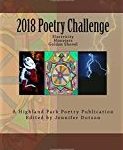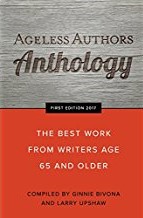
Peace by Frances Bertles

Frances Bertles
Frances Bertles showed her creative side during childhood when she made mud cakes with her brother. She was quick to make the distinction between mud cakes and pies. “You can decorate mud cakes, but you can’t cut mud pies.” Later she was destined to decorate Zintangles and boxes. Frances grew up in Conway, a tiny town located on Fir Island in Washington. She married her sailor boy, Dennis, and raised three children military style by moving every few years. Frances and her husband live in their forever home in Lake Havasu City, Arizona. They recently celebrated their 62nd wedding anniversary which she credits in part “by respecting and enjoying their differences.”
Parkinson’s and Drawing
Frances studied art history at Mohave Community College. Her interest in art has involved a myriad of objects including fiber, hammer, nails, paint, glue, rocks, computer parts, and other found items. But it was Parkinson’s disease that brought her to ink and paper two years ago. She has lots of experience with this progressive neurological disorder since her grandmother and mother had the disease. Her daughter also has Parkinson’s. Frances was diagnosed with PD when she was 75. She knew nothing about ink and paper drawings or Zentangles. What she did know was the interference Parkinson’s can have with balance and handwriting. “I don’t think in a straight line, so to be smart and careful, I had to pick a safer way to create. Paper and ink just happened because it could possibly keep my handwriting from leaving me. I thought of it as an exercise.”
Zentangle Reference

A book by Becka Krahula inspired her to get started. One Zentangle A Day: A 6-Week Course in Creative Drawing for Relaxation, Inspiration, and Fun gave her a step-by-step process for creating the artwork. “The steps have shown me a safe place. A place to just be. No questions, no answers, just peace,” Frances says. Over 500 drawings later, here is how she does it.
Zentangle Process

A Beginning Point
Frances works with Micron pens and graphite stick for shading. She keeps an eraser on standby if the shading is too dark. She uses any kind of paper as long as it does not bleed. The first time the pen touches the paper, a journey has begun. For her, it is the journey and not the destination that is important. “I enjoy the space on the page. I make random and sometimes connected lines on the page. Those lines create spaces and those spaces are now the journey.”

Taking Shape
Although she works in one space at a time, the approach varies from space to space. One space may be decorated with triangles or with a net. Or she lets the Parkinson’s stroke fill the space. “When I start to shake, I have to decide whether to push the pen or to pull it. Some days pushing is better than pulling. It is a simple remedy. I just turn the paper. I keep breathing on the journey and take a step back and look. Some spaces create an image when they are combined and the destination is in view. Sometimes, I don’t know if I have arrived at the destination or just run out of room on the paper!”

Adding Decorations
Zentangle Benefit
Frances enjoys creating the portable drawings in airports, living rooms, dining tables, doctors’ offices, and camp sites. She draws at least five times a week and prefers to work with 9” by 12” and smaller sheets of paper. Sometimes the Zentangle is completed in one sitting. It is not unusual for her to work three hours at a time. “I get lost in some of them and don’t know time. The pen and paper is calming. I do not feel fear or uncertainty about Parkinson’s. The peace comes in doing the intricate parts and the repetition,” she says.
According to Cathy Malchiodi, PhD, by refraining from planning and allowing the lines and shapes to unintentionally emerge, you stay in the here and now. You do not need to know the end result. You will figure it out as you go along. An anxious mind is calmed, and you are relaxed.

Great Granddaughter’s Art Lesson

I have studied art for 75 years!
Color or Black & White?
Frances enjoys doing art together with her five-year-old great granddaughter and smiles as she recalls a conversation. She looked at my work and said, “It would be pretty if you colored them.”
I like the drama of the black and white. Don’t you?”
She replied, “Yes, and they won’t be pretty unless you color them.” Then she stood with her hands on her hips and said, “I have studied art for 75 years and I know they won’t be pretty unless you color them.”
“Later we traded our work. She took five of them to her room. I bet she colored them!”
Either way the drawings are dramatic and beautiful!!
What else is Frances creating?
Although she does not work in a studio, her husband built her a 10 by 12 shed for her crafts prior to her ink and paper interest. This place for her hammer and nails has recently become a spot for another creative endeavor. Her definition of art is “making something from what was into what is with excellence.” Frances admits, “I have a box thingy going on out there. I think everyone needs a box to put stuff in. So I decorate boxes. I picture them on a bedside table to capture dreams or ideas.”
Keeping in Touch
If you would like to connect with Frances regarding her decorated ink and paper drawings or boxes, you can find her on Arts & Such PWPs
Question: Do you have a hobby or activity where you lose all sense of time when engaged in it? You are calm and peaceful and for a time you forget all about Parkinson’s. Please elaborate.
Blessings!
Linda




















